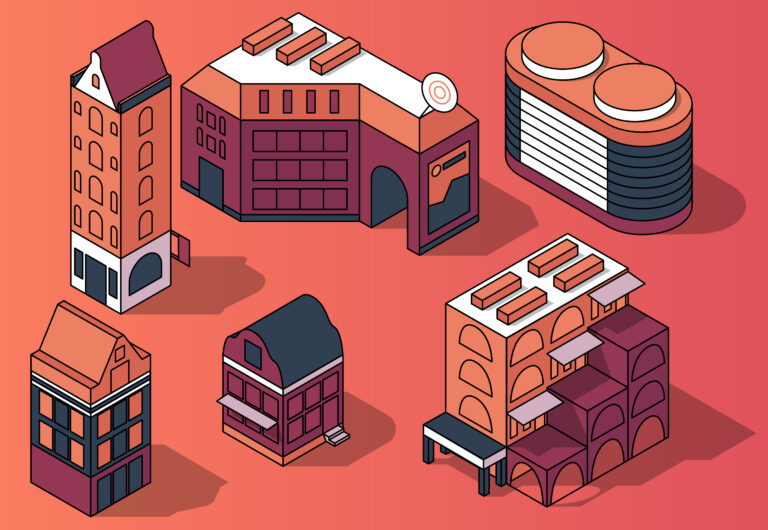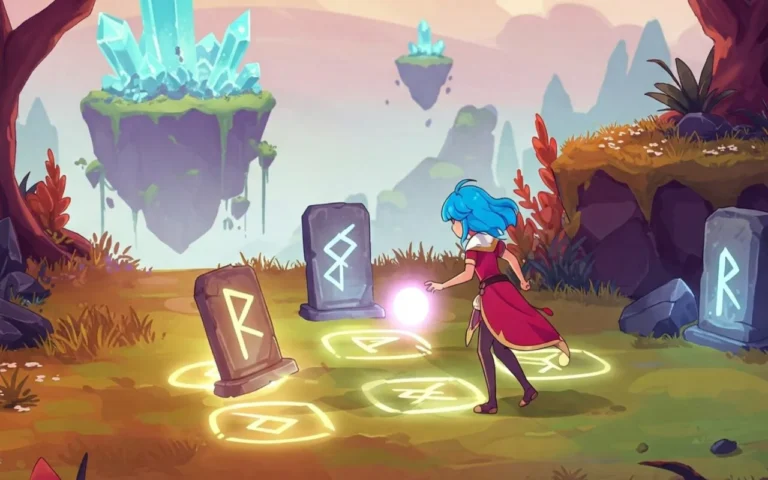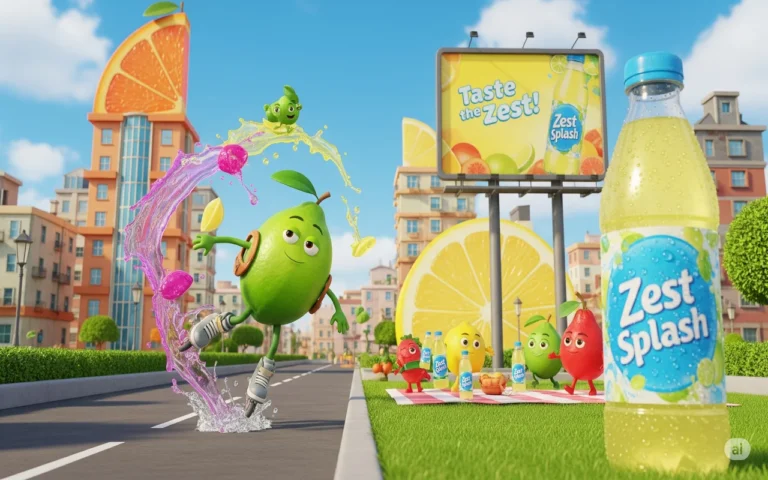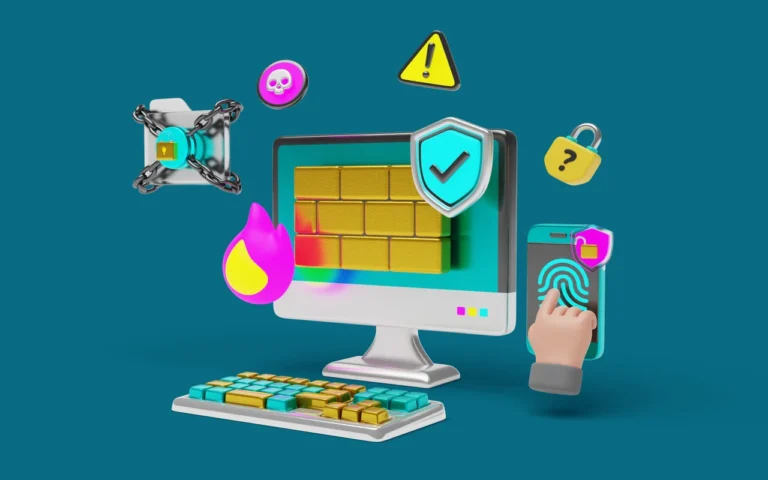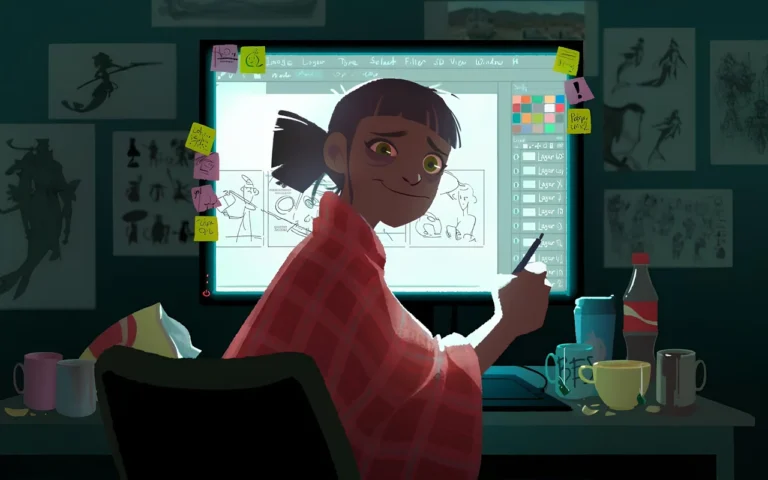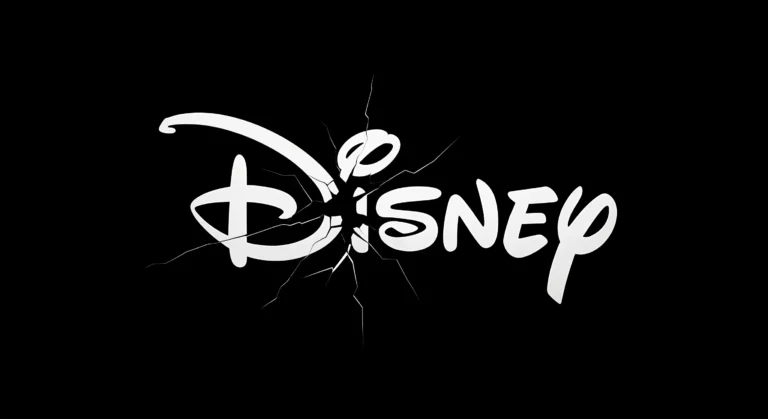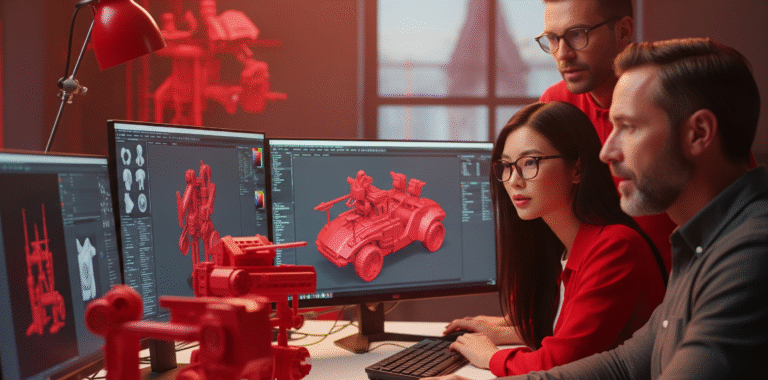3D character art is at the heart of today’s digital entertainment and visualization industries, powering experiences in everything from immersive video games and animated films to the cutting-edge worlds of virtual and augmented reality (VR and AR).
At its core, a 3D character artist is a storyteller, using technology as a canvas to craft characters that breathe life into interactive worlds. This field demands both creative vision and technical expertise, drawing in those who love the art of character creation and thrive on the thrill of working with advanced tools and software.
The 3D character artist embodies a fusion of artistry and technical precision, weaving together sculpting, texturing, and rigging to craft characters that captivate and convey stories.
Working in the ever-evolving industry of 3D art, Pixune Studios’ 3D character artists balance their mastery of human and creature anatomy with the technical skills needed to create characters that are both visually compelling and interactive.
In this essay, we’ll unpack the varied responsibilities of a 3D character artist, explore the critical skills involved, and take a journey through the intricate creation process. We’ll also look at the latest tools and trends shaping this field’s exciting future.

Need 3D Animation Services?
Visit our 3D Animation Service page to see how we can help bring your ideas to life!
Inside the Studio: Responsibilities of a 3D Character Artist
A 3D Character Artist’s role is as diverse as it is vital, guiding a character’s journey from raw concept to polished digital presence. This includes designing the initial character concepts, sculpting and refining digital 3D models, applying realistic textures, and setting up the character’s internal rigging for natural movement.
Beyond just creating a visual, these artists ensure their creations are technically sound and optimized for the game or film they’ll appear in, making each step a balance between creativity and precision. It’s a role that combines the thrill of artistic exploration with the meticulous detail needed for technical execution.
Below is a list of some of the roles a 3D character designer carries out:
Character Modeling:
Character modeling is the art of translating 2D sketches into 3D structures. Artists use programs such as ZBrush to add depth and detail, focusing on facial expressions, muscular structure, and garment details. This step involves precise control over geometry, aiming for an optimal blend of detail and performance. For example, in creating a superhero character, the artist may accentuate powerful muscles and dynamic poses, capturing the character’s essence while ensuring the model performs efficiently within the intended platform.
Sculpting and Texturing:
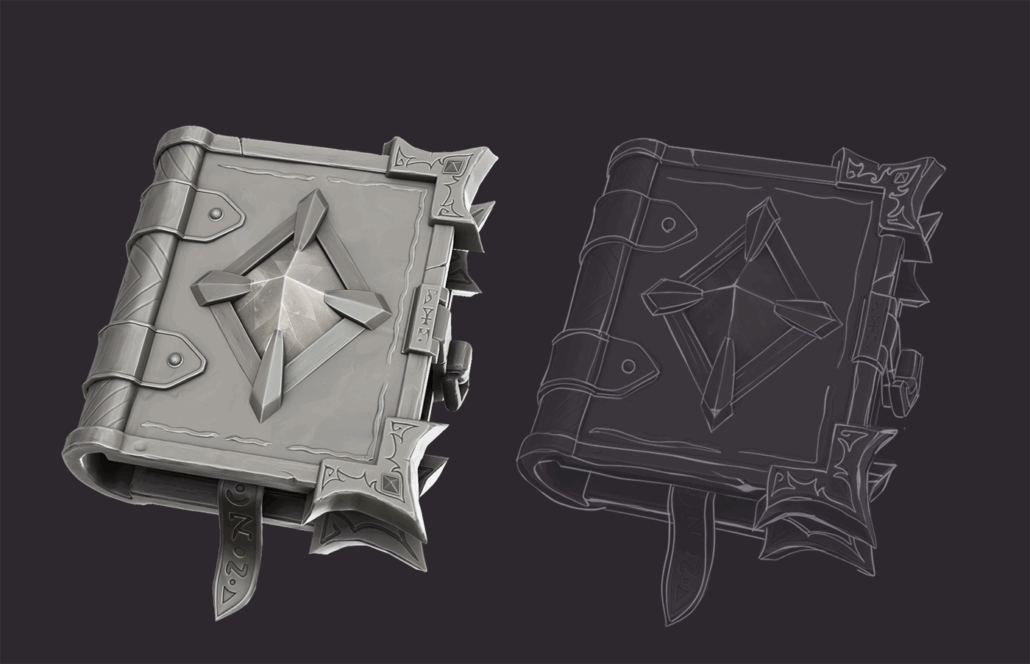
Sculpting and Texturing are the steps where a character transforms from a basic shape into a fully realized digital entity.
- Sculpting allows artists to add fine details such as facial wrinkles, muscle definition, or even folds in clothing, using tools like ZBrush for precision.
- Texturing then adds the character’s unique colors, patterns, and surface details, such as skin textures or metallic reflections on armor.
For instance, an artist might sculpt battle scars and rugged features when designing a seasoned warrior and then apply textures that mimic worn leather and aged metal for added authenticity.
Rigging and Skinning:
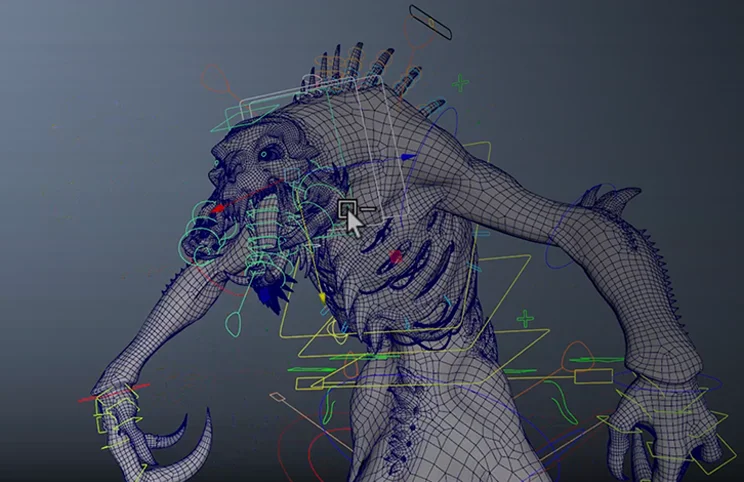
Rigging in 3D animation is a fundamental aspect of preparing a character for animation, involving the creation of a digital skeleton that allows for movement and flexibility. Once the rig is established, skinning comes into play, where the character’s mesh is attached to the rig in a way that enables realistic deformation.
When designing a cartoonish character, for instance, rigging may involve exaggerated joint placements to facilitate dynamic poses, while skinning ensures that the character’s oversized head moves naturally as it bounces with excitement.
Animation:
While animation skills are not a strict requirement for character artists, they can be incredibly advantageous.
With a grounding in animation, artists can make informed decisions during the modeling process, understanding how their characters will move and interact with the environment.
For example, an artist designing a dragon character can take into account how the wings should attach and articulate, ensuring that when animated, the creature’s movements appear both powerful and graceful.
Collaboration with Other Teams:
A character artist plays a pivotal role in a larger 3D creative team or a 3D animation studio, frequently collaborating with animators, concept artists, and game developers to ensure that the final character model is cohesive with the project’s artistic vision and technical requirements. For example, in a horror-themed game, the character artist must work closely with the concept artist to evoke the right mood through design while also ensuring that the animations facilitate smooth, terrifying movements that heighten the player’s fear experience.
What Are the Key Skills of a 3D Character Artist?
The craft of 3D character art requires a harmonious blend of artistic vision and technical skill.
A solid grasp of anatomy, color theory, and lighting is fundamental for creating characters that engage audiences. At the same time, expertise in software tools like ZBrush and Unity ensures these designs come to life in vibrant, interactive worlds.
In the following, we will briefly review some of the major capabilities this job requires:
Artistic Skills:
Crafting a character that captures the audience’s imagination requires a foundation in crucial artistic principles such as anatomy, proportion, color theory, and lighting. Artists skilled in anatomy can create characters that embody realism or otherworldly traits with finesse. Proportional accuracy contributes to the visual harmony of characters, while a keen understanding of color theory helps convey mood and personality. Additionally, thoughtful lighting choices enhance the three-dimensionality of a character, making them more relatable and engaging in any setting.
Technical Skills:
Proficiency in 3D software, such as Maya, Blender, and ZBrush, is indispensable for 3D Character Artists. These tools allow for the detailed modeling and crafting of characters, while knowledge of UV mapping, texturing, and materials is essential for adding depth and realism to their designs. Furthermore, being adept with real-time rendering engines like Unreal Engine or Unity is a significant advantage, as it ensures characters are not only visually striking but also interactive and functional within gaming experiences.
Conceptualization and Design:
Exceptional 3D Character Artists are adept at taking concept art and transforming simple 2D sketches into intricate 3D characters. Understanding character design is a key component of this process, encompassing the development of a character’s aesthetic and personality. This skill is vital for creating compelling characters that resonate with viewers and enhance the overall storytelling experience.
Crafting 3D Characters: A Step-by-Step Guide
Creating a 3D character is a complex process that progresses through multiple stages, each demanding attention to detail.
The journey starts with concept art, where the character’s visual concept is sketched. From there, artists model the character’s form, sculpt intricate details, and apply textures that bring color and life. Finally, rigging and skinning allow the character to move fluidly, ensuring they are ready for animation and interaction within their digital environment:
1. Concept Art:
This stage focuses on defining the character’s visual style, personality, and essential attributes, typically through 2D sketches. It forms the backbone of the entire creation process, ensuring that all subsequent work aligns with the initial vision and character narrative.
2. Modeling:
Once the concept is finalized, artists begin the 3D modeling phase, developing a digital sculpture that outlines the character’s form and silhouette. This crucial step ensures that the character’s physical characteristics are accurately represented and sets the stage for subsequent detailing.
3. Sculpting and Detailing:
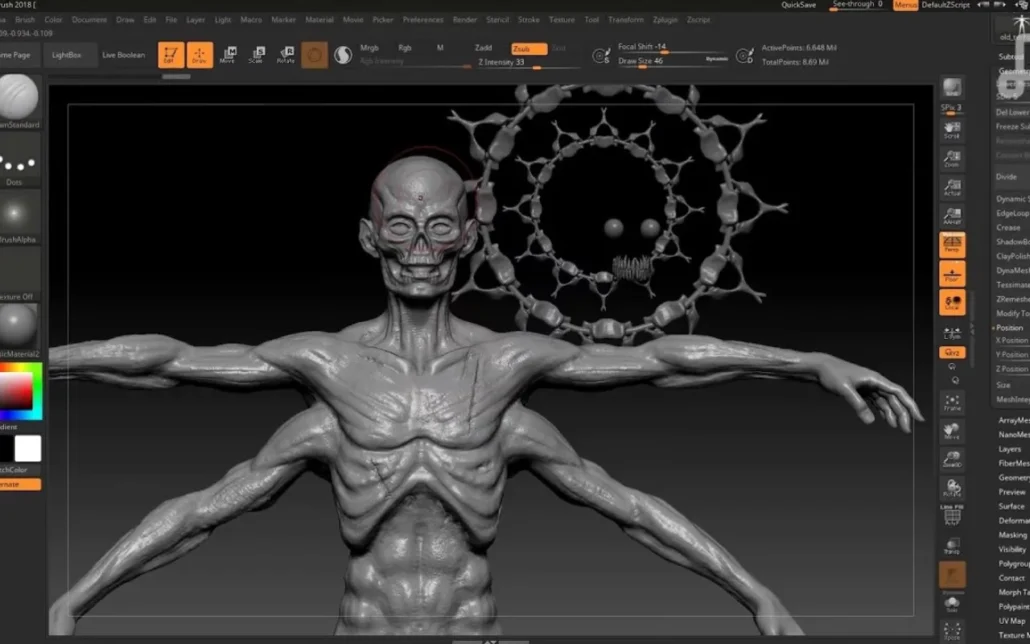
With software like ZBrush, character artists can introduce complex details to their models, such as wrinkles, scales, or fabric textures, which significantly contribute to the realism and depth of the character’s appearance.
4. Texturing:
In this stage, the artist applies a range of colors and textures to the character model, which includes skin tones, hair, and the fabric of clothing or armor. This application is essential for creating a visually appealing and believable character.
5. Rigging and Skinning:
By incorporating a skeletal framework through rigging, the character can move. Skinning is the subsequent step that ensures the character’s surface moves seamlessly with the rig, resulting in smooth, realistic animations.
6. Polishing and Final Touches:
The final step includes meticulously refining details, adjusting shaders, and preparing the character for integration into the overall project, ensuring it is ready for animation and interaction.
What Types of 3D Characters Do Artists Exploit?
3D characters are categorized into several types, typically influenced by the project’s scope and artistic direction. These classifications shape characters’ design, animation, and integration within their settings.
For instance, video game characters often need to be optimized for real-time performance and player interaction, while characters in animated films may prioritize visual storytelling and emotive expressions. Other classifications include stylized characters, which feature bold and exaggerated designs, and realistic characters that focus on authenticity and lifelike movement.
Grasping these distinctions is vital for 3D character artists to tailor their techniques to various artistic and project-specific requirements:
Realistic Characters:
Realistic characters are vital for drawing audiences into the narrative in video games and films. These characters require a high degree of detail, emphasizing anatomical accuracy and naturalistic movement.
Artists must skillfully apply textures and shading to bring out lifelike features, enabling characters to express a range of emotions and engage viewers through their authenticity and relatability.
Stylized Characters:
Stylized characters prioritize an eye-catching aesthetic over lifelike accuracy, making them particularly popular in animated films and certain video game genres. Their distinctive designs, often featuring exaggerated proportions and bold colors, create a unique artistic flair that allows for a more expressive and imaginative portrayal of character personalities, enriching the overall visual narrative.
Cartoon Characters:
Cartoon characters, often utilized in children’s media, are characterized by their playful and exaggerated designs that favor simplicity. With oversized heads and bright colors, these characters create a joyful atmosphere that appeals to young audiences, encouraging laughter and imaginative play through their humorous antic.
Creature Characters:
Focused on creating non-human characters like monsters and fantastical animals, creature design offers artists boundless imaginative opportunities. This practice challenges them to combine real-world anatomy with creative concepts, resulting in visually compelling creatures that captivate viewers and enhance storytelling by adding depth and intrigue to the narrative.
Practical Applications of 3D Characters in the Industry
3D Character Artists play a crucial role in industries like gaming, film, and product visualization, facing varied artistic challenges that influence their design and storytelling techniques:
Video Games:
The gaming industry relies heavily on character design services, with 3D artists crafting avatars, NPCs, and fantastical creatures that players not only interact with but also shape their adventures and experiences within the game.
Film and Animation:
Character artists play a vital role in animated films by collaborating with animators to enhance digital characters, focusing on crucial elements such as expressions, textures, and attire to enrich the storytelling experience.
Virtual Reality and Augmented Reality:
As VR and AR continue to evolve, character artists are presented with unique opportunities to craft interactive characters that enhance the immersive experience, requiring innovative designs that respond to user interaction.
Advertising and Marketing:
The use of 3D characters in advertising is on the rise, with brands utilizing everything from fun and quirky mascots to realistic digital influencers to engage consumers and convey their messages effectively.
Product Visualization and Training Simulations:
In areas such as medicine and engineering, 3D characters are utilized to create realistic simulations for training, enabling professionals to practice their skills in a safe, risk-free environment.
Well-Known Tools and Software for 3D Character Artists
3D character art hinges on a collection of cutting-edge software tools, each crafted for specific steps in the character design pipeline, helping artists execute their creative ideas with accuracy and flair:
Modeling and Sculpting Tools:
ZBrush and Blender are renowned for their ability to sculpt detailed models, giving artists the tools needed for fine detail work.
For the subsequent stages of character modeling and rigging, Maya and 3Ds Max are popular choices, known for their strong animation capabilities. Read our guide on Maya VS. Blender to better understand each platform’s capabilities.
Texturing Software:
Substance Painter and Adobe Photoshop are critical tools for texturing that enable artists to enhance character surfaces with rich details.
Substance Painter allows for advanced texture painting on 3D models, while Photoshop is excellent for creating and editing 2D texture maps.
Rigging and Animation Software:
Maya is favored for its extensive rigging and animation tools, allowing character artists to develop intricate movement systems and lifelike animations. Its strong industry presence ensures that artists can work effectively within established production environments.
Rendering Engines:
Unreal Engine and Unity are two of the most popular platforms for game development. Unreal Engine’s cutting-edge rendering capabilities provide unparalleled visual quality, whereas Unity’s flexible architecture allows for rapid growth and deployment across various devices.
Learn more about the differences between Unity and Unreal Engine to choose the most suitable platform for your production.
Career Path: The Landscape of 3D Character Art
For those aspiring to become 3D Character Artists, the journey typically begins with education and practice in various art forms.
Key steps involve pursuing studies in fine arts or animation and committing to regular training, which helps in developing the necessary skills for a successful career:
Education and Training:
Although a formal education can provide valuable insights, many 3D Character Artists enhance their skills through self-directed study or online resources.
Courses and workshops on digital art and 3D modeling offer flexible learning opportunities catering to individual needs.
Portfolio Development:
A strong portfolio showcasing a wide range of characters, each reflecting different artistic styles and levels of detail, is crucial for landing job opportunities.
This collection highlights an artist’s skills and ability to adapt to different creative demands.
Entry-Level Positions:
Junior or assistant character artist positions are key for budding artists, offering practical experience and mentorship from seasoned professionals. These roles help accelerate the learning curve, ensuring that new artists develop a comprehensive character design and development skill set.
Advancement Opportunities:
With a solid track record, 3D character artists can move into higher-level positions such as Lead Artist, Art Director, or Creative Director, assuming leadership responsibilities and shaping the creative vision of character design projects.
2024 Trends of 3D Character Art
The landscape of 3D character art is constantly shifting, with technological advancements leading to the emergence of new trends.
Artists are increasingly utilizing AI tools, along with innovative techniques in VR and AR, to create captivating and interactive characters:
Real-Time Rendering:
The push for real-time rendering in games and VR/AR settings has led character artists to focus on optimizing their models, ensuring that performance does not come at the cost of quality. This necessitates a keen understanding of rendering techniques and resource management.
Hyperrealism:
Progress in rendering and texturing techniques has made it possible to design hyper-realistic characters that are nearly indistinguishable from real people.
This is particularly evident in video games and cinematic works. This realism elevates the audience’s experience, creating deeper connections with the characters on screen.
AI and Procedural Generation:
The application of AI tools is increasingly common in 3D character art, automating repetitive tasks such as UV mapping and texturing. This innovation grants artists the freedom to focus on creativity and storytelling, ultimately enhancing the quality of their work.
3D Printing and Digital Collectibles:
3D character artists are increasingly engaging in the collectibles and merchandising market, crafting models that can be either 3D printed or utilized in virtual settings. This trend presents new opportunities for creative expression and fan engagement through tangible and digital means.
Diversity in Character Representation:
There is a notable movement towards creating characters representing diverse backgrounds, including various cultures, body types, and identities. This focus enhances narrative depth and fosters inclusivity within the entertainment landscape.
Final Words
A career as a 3D Character Artist beautifully blends creativity and technology, attracting individuals passionate about artistic expression and digital innovation. These artists are essential in designing characters that resonate across various media, from video games and animated films to immersive virtual reality experiences. Every character they create is a vessel of emotion and narrative, inviting audiences to engage with the story and immerse themselves in dynamic worlds.
The growing demand for 3D character artists reflects the rapid evolution of technology in digital media. As software becomes more advanced, artists are encouraged to push their creative boundaries and explore new techniques, fostering an environment ripe for innovation; for those who thrive on the intersection of artistry and technology, a career as a 3D Character Artist offers not only personal fulfillment but also the opportunity to make a significant impact in the realm of digital storytelling and entertainment.
